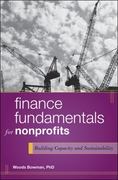Question
Discussion, at least 150 words. How Fair is Check Into Cash? In 1993, the first Check Into Cash location opened in Cleveland, Tennessee. Today there
Discussion, at least 150 words.
How Fair is Check Into Cash? In 1993, the first Check Into Cash location opened in Cleveland, Tennessee. Today there are 1,250 Check Into Cash centers among an estimated 22,000 payday advance lenders in the United States. There is no doubt about the demand for such organizations, but the debate continues on the fairness of payday-advance loans. A payday loan is a small, unsecured, short-term loan ranging from $100 to $1,000 (depending upon the state) offered by a payday lender such as Check Into Cash. A payday loan can solve temporary cash-flow problems without bouncing a check or incurring late-payment penalties. To receive a payday advance, borrowers simply write a personal post-dated check for the amount that they wish to borrow, plus the payday loan fee. Check Into Cash holds their checks until payday when the loans are either paid off in person or the check is presented to the borrowers banks for payment. Although payday-advance borrowers usually pay a flat fee in lieu of interest, it is the size of the fee in relation to the amount borrowed that is particularly aggravating to opponents of the pay-day advance industry. A typical fee is %15 for every $100 borrowed. Payday advance companies that belong to the Community Financial Services Association of America (CFSA), an organization dedicated to promoting responsible regulation of the industry, limit their member companies to a maximum of four rollovers of the original amount borrowed. Thus, a borrower who rolled over an initial $100 loan for the maximum of four times would accumulate a total of $75 in fees all within a 10-week period. On an annualized basis, the fees would amount to a whopping 391%. The 391% is an annual nominal rate {15% x (365/14 weeks). An annual rate of 391% is a huge cost in relation to interest charged on home equity loans, personal loans, and even credit cards. However, advocates of the payday-advance industry make the following arguments: Mot payday loan recipients do so either because funds are unavailable through conventional loans or because the payday loan averts a penalty or bank fee which is, in itself, onerous. According to Check Into Cash, the cost for $100 of overdraft protection is $26.90, a credit card late fee on $100 is $37, and the late/disconnect fee on a $100 utility bill is $46.16. Bankrate.com reports that non-sufficient funds (NSF) fees average $26.90 per occurrence. A payday advance could be useful, for example, if you have six outstanding checks at the time you are notified that the first check has been returned for insufficient funds and you have been charged an NSF fee of $26. A payday advance could potentially avert subsequent charges of $26 per check for each of the remaining five checks and allow you time to rearrange your finances. When used judiciously, a payday advance can be a viable option to meet a short-term cash flow problem despite its high cost. Used unwisely, or by someone who continuously relies on a payday loan to try to make ends meet, payday advances can seriously harm ones personal finances. What is your opinion?
Step by Step Solution
There are 3 Steps involved in it
Step: 1

Get Instant Access to Expert-Tailored Solutions
See step-by-step solutions with expert insights and AI powered tools for academic success
Step: 2

Step: 3

Ace Your Homework with AI
Get the answers you need in no time with our AI-driven, step-by-step assistance
Get Started


